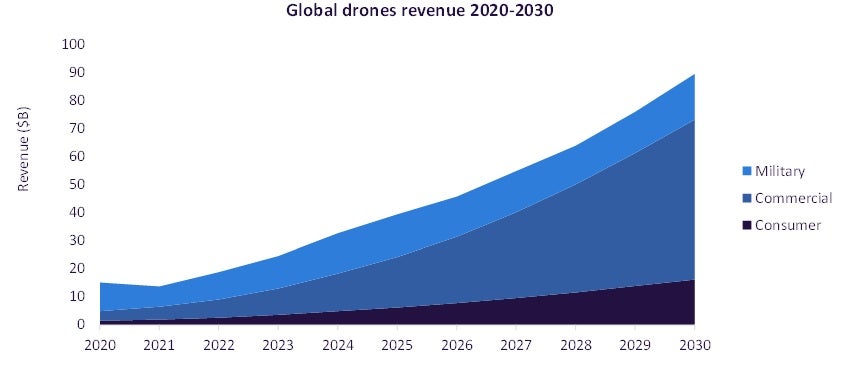Uncrewed aerial vehicles (UAVs), more commonly known as drones, have moved from experimental pilots to mainstream deployment in oil and gas operations. Their agility, affordability, and ability to host advanced sensors and AI systems make them indispensable for asset inspection, emissions monitoring, and logistics support. By reducing the need for direct human intervention in hazardous environments, drones are redefining safety standards while improving efficiency and cost-effectiveness across upstream, midstream, and downstream operations.
Oil and gas companies are rapidly integrating drones into their digital oilfield ecosystems. Players such as Saudi Aramco, BP, Chevron, Shell, and TotalEnergies are expanding their drone fleets for routine inspections of pipelines, flare stacks, tanks, and offshore platforms. Advanced capabilities, including methane leak detection, 3D digital twinning, and real-time data integration with AI and edge computing platforms, are strengthening predictive maintenance and environmental, social, and governance compliance.
According to leading data and analytics company GlobalData‘s forecasts, the global drone market will surge from $32.2bn in 2024 to nearly $90bn by 2030, with commercial drones overtaking military drones as the largest segment by 2025. Oil and gas is one of the key industries driving this expansion, as operators increasingly rely on UAVs for inspection, emissions management, and offshore logistics. This rapid market growth underscores how drones are no longer niche tools but core enablers of operational resilience and sustainability in the energy sector.
Despite these benefits, challenges remain. Payload limitations, battery life, and varying regulatory regimes constrain the scale of drone deployments. Infrastructure for autonomous swarm operations and drone traffic management is still emerging. Additionally, concerns around airspace security and data governance present hurdles to wider adoption. However, as regulations evolve to enable beyond-visual-line-of-sight operations, drones will continue to gain prominence as critical tools in oil and gas operations. Further discussion on the role of drones in transforming the oil and gas industry, along with insights into leading adopters, use cases, and competitive positioning, can be found in GlobalData’s new theme report, Drones in Oil and Gas.

US Tariffs are shifting - will you react or anticipate?
Don’t let policy changes catch you off guard. Stay proactive with real-time data and expert analysis.
By GlobalData





